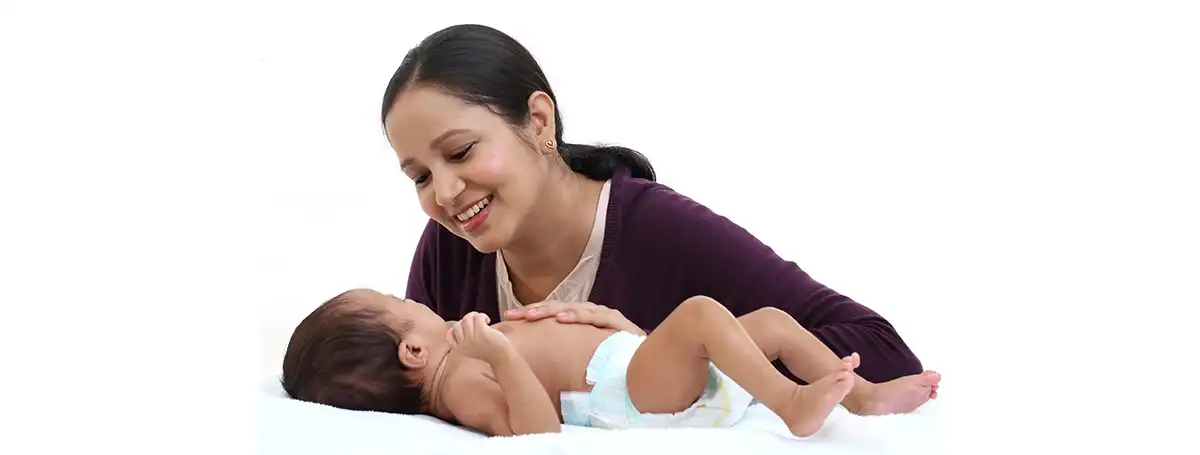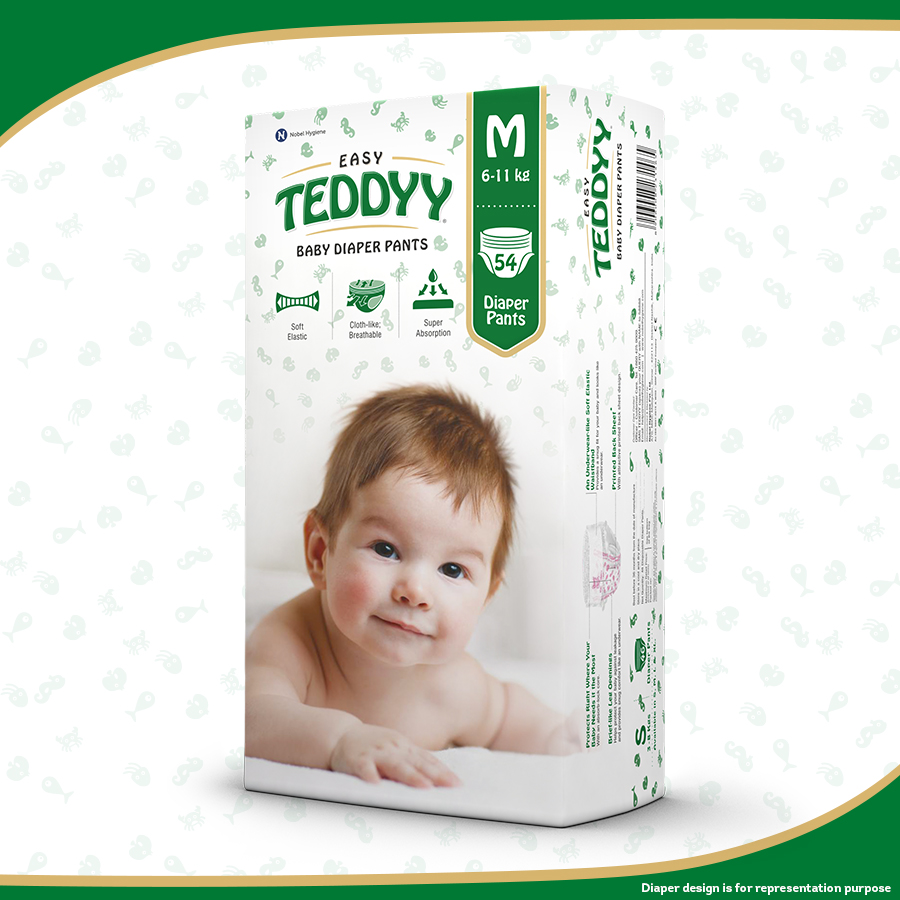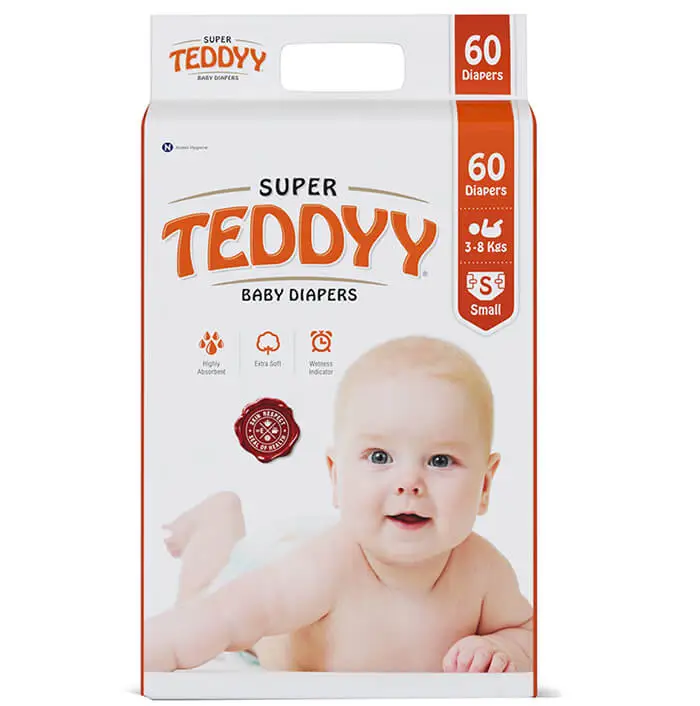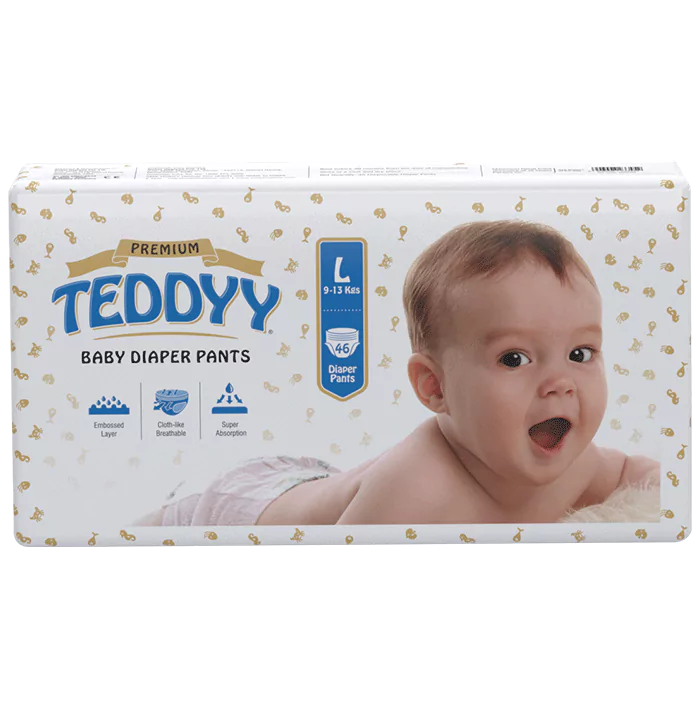Mother’s Guide 101: When and How to Treat Your Baby’s Fever
It was 2 in the morning when Jaya heard her 3-month-old son crying. Worry crept in as he was usually a peaceful sleeper. He even felt warmer than usual. Riled with concern, she dialed her pediatrician, but her calls went unanswered. With no one else around at home, she turned to the internet for help. Typing in a frantic search, “fever in babies when to worry”, became her lifeline in a time of uncertainty.
If you’re in a situation like Jaya, a cascade of questions may have flooded your mind. What is the normal body temperature for babies? Do we need to take the baby to the doctor? Should we give them medicine? Are there any effective home remedies for fever in babies?
Your search ends here! We’ve gathered all you need to know about baby fevers in one place. Let’s begin with the basics.
What Temperature Is Considered A Fever For A Baby?
Our grown-up bodies come with a handy thermostat – we shiver when cold and sweat when hot. Yet, these controls are a work-in-progress for newborns. Most of the time, fevers are just a sign that your baby’s body is fighting off an infection. The normal body temperature for babies varies depending on their age, but a temperature of 100.4°F or higher is considered a viral fever in babies. Here’s a friendly chart to help you find the right number for your little one.
| Age Range | Green
Normal Temperature |
Yellow
Moderate Fever |
Red
High Fever |
| 0-3 Mos | >96.4-99.3°F | X | >99.3°F |
| >3-36 Mos | >95.7-99.7°F | >99.7-101.3°F | >101.3°F |
| >36 Mos | >95.7-99.9°F | >99.9-102.9°F | >102.9°F |
Babies can develop fevers for various reasons, such as teething discomfort, ear infections, or even from being wrapped up too snugly. It’s natural to feel concerned, but it’s essential to remember that most fevers in babies are typically not a cause for major worry.
You can keep an eye out for these signs of fever in newborns:
1. Warm forehead
2. Flushed skin
3. Restlessness
4. Reduced appetite
5. Rapid breathing
6. Irritability
7. Excessive crying
8. Difficulty sleeping
9. Arching back
10. Unusual fussiness
How To Measure Your Baby’s Temperature?
Taking a baby’s temperature can be tricky at first. But with a little practice, you’ll get the hang of it in no time.
1. Choose the right thermometer. For babies under 3 months old, use a rectal thermometer. For babies over 3 months old, you can use a rectal, ear, or forehead thermometer.
2. Comfort your baby. If your baby is fussy, try swaddling them or giving them a pacifier.
3. Take the temperature by following the instructions on the thermometer’s packaging.
4. Read and record the temperature.
5. Clean the thermometer and store it in a dry place.
Easy-peasy!
Quick tip: If you’re using a rectal thermometer, use a small amount of petroleum jelly to lubricate the tip of the thermometer before insertion.
5 Tips On How To Bring A Baby’s Fever Down
Before giving the doctor a call, you might want to try out some gentle home remedies for fever in babies.
1. Dress your baby in light, loose-fitting clothing. Babies can easily overheat when wrapped up, which can make their fever worse.
2. When your baby has a fever, it’s crucial to keep them well-hydrated with breastmilk, formula, or water. Prolonged wear of wet diapers is notoriously famous for causing discomfort and fever in babies. For an effective solution, consider Teddyy Baby Diapers — they’re soft, absorbent, and reliable against leaks and you easily get them delivered to your doorstep through diaper shopping online.
3. A cool bath is one of the best home remedies for fever in babies. Make sure the water is not too cold, and don’t leave your baby in the bath for too long.
4. A cool compress can help also bring down a baby’s fever. Soak a washcloth in cool water and apply it to your baby’s forehead.
5. If your baby’s fever is over 100.4°F, you can give them a fever reducer such as paracetamol or ibuprofen (Advil). Make sure to consult a doctor beforehand to understand if these medicines are safe for your baby and their age.
Here’s hoping your little one stays fever-free. But if a fever does come along, these tips will help you keep both of you cool, calm, and collected. Thanks for reading!


The normal body temperature for babies can differ based on their age, yet a temperature of 100.4°F or above is identified as a fever in infants.
Dress your baby in light, breathable layers. Use a onesie or light pyjamas and avoid heavy blankets. Keep the room comfortably cool. Monitor their temperature to prevent overheating.
Avoid giving newborns any solid foods or juices while they have a fever. Stick to breast milk or formula for proper hydration. If your baby is six months or older, you can offer small sips of water in addition to milk.
Yes, it’s possible for babies to develop a slight fever during teething due to the inflammation and increased saliva production. However, if the fever exceeds 100.4°F, it might indicate another underlying issue. Always consult a healthcare professional for proper evaluation.
Go to urgent care if your baby is under 3-months-old and has a mild fever, a high fever over 104°F, difficulty breathing, persistent vomiting, or signs of dehydration. Trust your instincts – if you’re worried, seek medical help.





